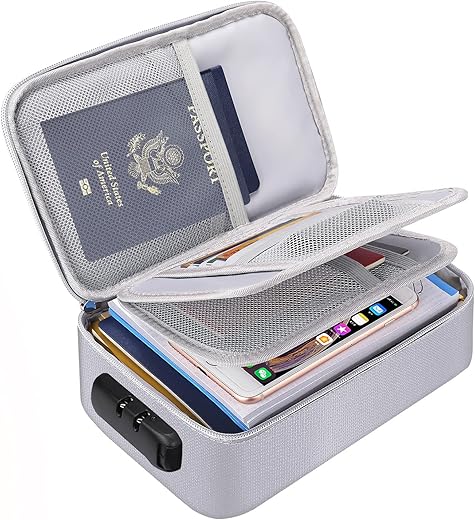WINDOWS PCs TROUBLESHOOTING FOR COMMON ISSUES USER GUIDE: How to Troubleshoot and Fix Windows 11, 10, and Earlier Versions of Windows System Issues
Navigating the world of PC niche products can be overwhelming, especially when facing common technical issues. That’s where the step-by-step guide “How to Troubleshoot Common PC Problems” comes in. This guide is designed to provide practical solutions for individuals encountering frustrating issues with their computers. Whether it’s a pesky software glitch or a mysterious hardware malfunction, this guide aims to help readers troubleshoot and resolve their problems with ease and confidence.
Identify the Problem
To identify the problem, start by observing and noting down the specific issue your PC is facing. Keep an eye out for signs of slow performance, like programs taking longer to open or run than usual. Additionally, pay attention to any error messages that pop up on the screen. Record these details to have a clear picture of what’s going wrong with your computer.
Next, analyze the patterns of when these issues occur. Note down if the problems surface when you’re running specific programs, visiting certain websites, or performing particular tasks. This information will help us pinpoint the root cause of the problem more effectively. By documenting these observations, we can gather crucial data that will guide us towards finding a solution to address the issues your PC is experiencing.
Restart Your Computer
Simply put, restarting your computer can work wonders in resolving a variety of common issues. First, save any work you have open to prevent data loss. Next, click on the Start menu in the lower-left corner of your screen. From there, select “Restart” or “Shut down” and then power your computer back on after it completely turns off. This step helps clear out temporary files and resets various system processes that might be causing problems.
If you find your computer freezing or acting sluggish, a quick restart can often do the trick. Again, save any unsaved work to avoid losing information. Then, close all open programs or applications before restarting your computer. Give it a moment to power down completely before turning it back on. This method can help refresh your system and clear any glitches that may be hindering its performance.
Check for Software Updates
To ensure your operating system and software applications are up to date, follow these steps:
- Check for Updates: Open your operating system’s settings and look for the “Update” or “Software Update” option. Click on it to initiate the process. If there are updates available, follow the on-screen instructions to download and install them. Reboot your device if necessary to complete the update process.
- Enable Automatic Updates: Consider enabling automatic updates to ensure your software stays current. In your settings, locate the option for automatic updates and turn it on. This way, your system and applications will update in the background, saving you time and effort.
Keeping your operating system and software applications up to date is crucial for maintaining optimal performance and security. By regularly checking for updates and enabling automatic updates, you can ensure that any bugs or vulnerabilities are addressed promptly, reducing the risk of issues or security breaches.
Run Antivirus Scan
To perform a thorough antivirus scan on your computer, first, open your antivirus software. Look for an option like “Scan” or “Run a scan” within the program’s interface. Click on it to start the scanning process. Depending on your software, you may have the choice between a quick scan, a full scan, or a custom scan. For a comprehensive check, we recommend selecting the full scan option. This ensures that every part of your system is thoroughly examined for any potential malware or viruses that could be impacting your PC’s performance.
Once you’ve initiated the full scan, allow the antivirus software to complete the process. This can take some time, depending on the size of your storage and the speed of your computer. While the scan is running, avoid opening or using other programs to allow the antivirus software to concentrate fully on scanning your system. Upon completion, review the scan results provided by the software. If any malware or viruses are detected, follow the prompts to remove or quarantine the threats. Regularly performing such scans is essential to keep your computer running smoothly and safeguard your data from potential security risks.
Update Device Drivers
To update drivers for your hardware components, such as graphics cards and network adapters, is crucial to ensure compatibility and optimal performance. Start by identifying the manufacturer and model of your device. Access the official website of the manufacturer, search for their support or downloads section, locate your device model, and download the latest driver available. For example, if you have an NVIDIA graphics card, visit the NVIDIA website, search for your specific graphics card model, download the latest driver, and install it following the on-screen instructions.
Next, after downloading the driver, right-click on the Start button and select Device Manager. Locate the hardware component you want to update, such as the graphics card or network adapter, right-click on it, and choose Update driver. Opt for the option to browse your computer for driver software, then select the downloaded driver file to install the updated driver. Ensure to restart your computer after the installation is complete for the changes to take effect. For instance, if you have a Realtek network adapter, update the driver by locating the adapter in Device Manager, selecting Update driver, and then choosing the downloaded Realtek driver file for installation.
Summary of Solutions
In conclusion, troubleshooting common PC problems is a manageable task with the right approach. By following our guide, you have gained valuable insights into identifying and resolving issues like slow performance, software glitches, and connectivity problems. Remember to start with simple solutions like restarting your computer and checking for updates before moving on to more advanced troubleshooting techniques. With patience and persistence, you can keep your PC running smoothly and avoid unnecessary stress. Keep our guide handy for future reference, and feel confident in your ability to tackle any PC problem that comes your way. Happy troubleshooting!
Systweak Software Updater for Windows 1 PC, 1 Year | One-Click Updates | Update All Your Software | One-Time Setup (Email delivery-only, in 2-Hrs- No CD)
Bearded Dragon Secret Manual
Bearded Dragon Care: Find out how 93.7% of bearded dragon owners make these 37 deadly mistakes unintentionally that torturing their beloved beardie to death
The High Performance Handbook
Brand *new* product from well-known strength and conditioning author and coach, Eric Cressey. Multiple 16-week programs, over 200 exercise coaching videos, and multiple one-click upsells make $100+ affiliate payout very possible.






I just wanted to share that following these steps helped me resolve a persistent issue with my PC. Restarting the computer and updating the device drivers made a big difference. Thanks for the helpful guide!
Thank you for sharing your success story! It’s great to hear that the troubleshooting steps were effective in resolving your PC problems. If you have any more questions or need further assistance in the future, feel free to reach out.
I usually start with restarting my computer when facing issues, but I’ve never thought about checking for software updates before. Do you recommend doing that even if my computer seems to be running fine? Thanks for the tips!
I’ve updated my device drivers in the past, but sometimes it causes compatibility issues with my software. Any tips on how to avoid these conflicts? Thanks!
I followed the guide, but my computer is still having issues. Any advice on what to do next? I’m not sure what else I can try.
If you’ve followed the troubleshooting steps and are still experiencing issues, it may be helpful to reach out to technical support for further assistance. They can provide more in-depth troubleshooting to address the problem.
I have a question about running an antivirus scan – should I do that regularly, or only when I suspect a virus? I’ve heard different opinions on this so I’m curious about your take on it.
Running an antivirus scan regularly is a good practice to ensure your computer is protected from potential threats. It’s recommended to schedule regular scans to maintain the security of your system.